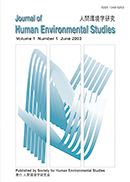Volume 19, Issue 2
Displaying 1-10 of 10 articles from this issue
- |<
- <
- 1
- >
- >|
Original Article
-
2021Volume 19Issue 2 Pages 73-81
Published: 2021
Released on J-STAGE: December 29, 2021
Download PDF (706K) -
2021Volume 19Issue 2 Pages 83-90
Published: 2021
Released on J-STAGE: December 29, 2021
Download PDF (654K) -
2021Volume 19Issue 2 Pages 91-98
Published: 2021
Released on J-STAGE: December 29, 2021
Download PDF (795K) -
2021Volume 19Issue 2 Pages 99-108
Published: 2021
Released on J-STAGE: December 29, 2021
Download PDF (793K) -
2021Volume 19Issue 2 Pages 109-115
Published: 2021
Released on J-STAGE: December 29, 2021
Download PDF (635K) -
2021Volume 19Issue 2 Pages 117-124
Published: 2021
Released on J-STAGE: December 29, 2021
Download PDF (826K) -
2021Volume 19Issue 2 Pages 125-131
Published: 2021
Released on J-STAGE: December 29, 2021
Download PDF (624K) -
2021Volume 19Issue 2 Pages 133-140
Published: 2021
Released on J-STAGE: December 29, 2021
Download PDF (1722K) -
2021Volume 19Issue 2 Pages 141-147
Published: 2021
Released on J-STAGE: December 29, 2021
Download PDF (663K) -
2021Volume 19Issue 2 Pages 149-154
Published: 2021
Released on J-STAGE: December 29, 2021
Download PDF (590K)
- |<
- <
- 1
- >
- >|
